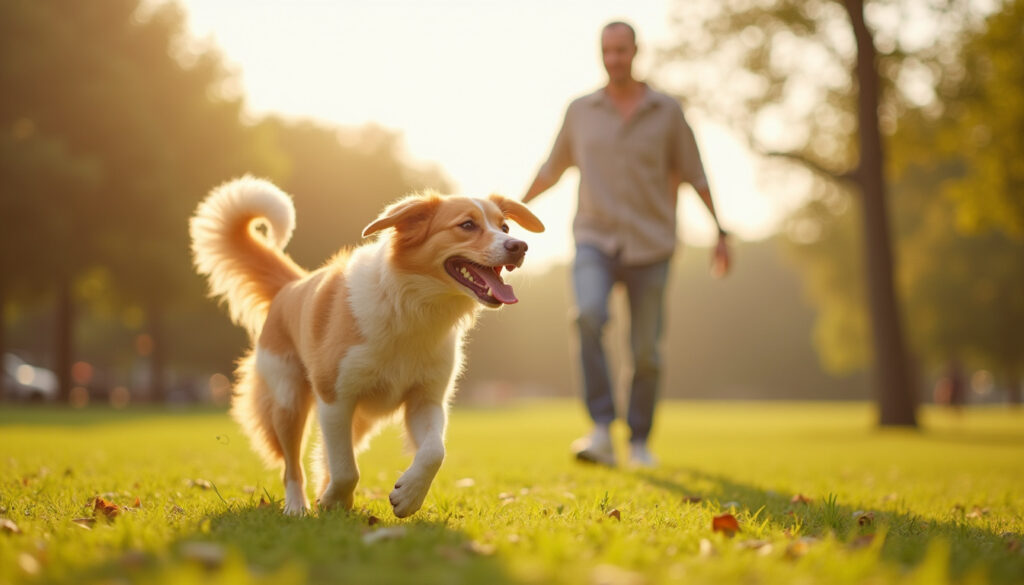Welcoming a dog into your home brings excitement and reward.
If you are new to dog care or adding a friendly pet, learn these dog basics to help your pet live well.
This guide looks at food, exercise, care, and training.
It gives you the key facts every owner needs for a happy pet.
Understanding Dog Nutrition: Fueling Your Dog’s Health
Good food builds a strong dog.
Dogs need a balanced diet to get energy, grow, and stay healthy.
Choose food with care, based on your dog’s age, size, breed, and condition.
• For puppies, high-calorie food that is rich in nutrients helps growth.
• For adult dogs, a balanced diet keeps them steady.
• For older dogs, special diets protect joints and help digestion.
Keep fresh water close at all times.
Avoid human foods like chocolate, onions, grapes, and some sweeteners that may harm your dog.
Exercise and Physical Activity: Keeping Your Dog Active
Regular exercise keeps your dog fit and clear-minded.
Dogs are active by nature and need daily movement to avoid weight gain and boredom.
• Small breeds may enjoy short walks and indoor play.
• Big or high-energy dogs often need running or activities with physical challenges.
Daily exercise also gives your dog a chance to meet others, which helps growth and joy.
Training and Socialization: Building a Strong Bond
Teach basic commands like “sit,” “stay,” and “come” to keep your dog safe.
Train by using treats, praise, and play to reward good behavior.
Early social contact with people, animals, and new places helps your dog feel calm and secure.
Joining puppy classes or getting help from a trainer may be wise.
Stay steady and patient during each lesson.
Grooming Essentials: Maintaining Your Dog’s Appearance and Health
Grooming keeps your dog neat and supports health.
Different breeds need different care, yet all dogs gain from simple routines:
- Brush often to clear dirt, reduce mats, and cut shedding.
- Bathe when needed with shampoos made for dogs.
- Trim nails to stop overgrowth that can hurt.
- Clean ears to ward off infections, especially in dogs with floppy ears.
- Brush teeth daily or use dental chews to keep the mouth clean.
Start grooming early so that your dog learns to trust the routine.
Health Care and Veterinary Visits: Proactive Protection
Regular vet visits help spot problems early.
They keep vaccinations up to date and support lasting health.
Keep these steps in mind:
• Visit the vet yearly or twice a year for a full check.
• Use vaccines to protect against diseases like rabies, distemper, and parvovirus.
• Give treatments for fleas, ticks, and heartworms.
• Spaying or neutering helps control the pet population and can reduce health risks.
Watch your dog’s behavior, how much he eats, and his energy. Small changes may show a health problem later.
Creating a Safe and Comfortable Environment at Home
A safe home is a key part of a happy pet’s life.
Use these tips to build a secure space:
• Give your dog a cozy bed or crate as a personal spot.
• Use a fence or supervise outdoor time to keep your pet from getting lost.
• Keep chemicals, medicines, and certain plants out of reach.
• Remove small toys or loose strings that could cause choking.
Toys, puzzles, and interactive play keep your dog’s mind busy and help him behave well.
Common Challenges and How to Overcome Them
Even the best care can meet challenges.
Knowing common issues helps you fix them:
• Separation anxiety: Let your dog slowly get used to short times alone, give safe toys, or use crate routines.
• Excessive barking: Find what triggers the bark and calmly shift your dog’s focus.
• Chewing: Provide strong chew toys and remove items that might hurt your dog.
Patience and steady care build trust and bring more happiness to your pet.

Essential Dog Basics Checklist for New Owners
- Choose food that fits your dog’s age and breed.
- Make a daily plan for exercise.
- Start basic training and socialization early.
- Set a regular grooming schedule.
- Plan regular vet visits and vaccinations.
- Set up a safe home space.
- Watch your dog’s actions and solve problems quickly.
- Keep learning about dog care.
Frequently Asked Questions About Dog Basics
Q1: What are the most important dog basics for new owners?
A1: The main dog basics are good food, regular exercise, steady training, neat grooming, and careful health care. These help a dog be safe and happy.
Q2: How often should I take my dog to the vet?
A2: Puppies and older dogs need visits about every 3-6 months. Adult dogs usually do fine with one check-up a year.
Q3: Can I train my dog myself, or should I hire help?
A3: You can teach many basic commands with treats and praise. Yet, trainers can help if you have tough behavior issues or need extra guidance.
Conclusion: Make Your Dog’s Happiness a Priority
Learning these dog basics builds a strong bond with your pet.
A dog that eats well, moves daily, practices good behavior, enjoys grooming, and visits the vet lives a happy life.
Spend thoughtful time to learn about your dog’s needs.
This care brings years of kind moments with your four-legged friend.
Ready to begin this journey? Start with these simple steps today and enjoy life with your happy dog.
